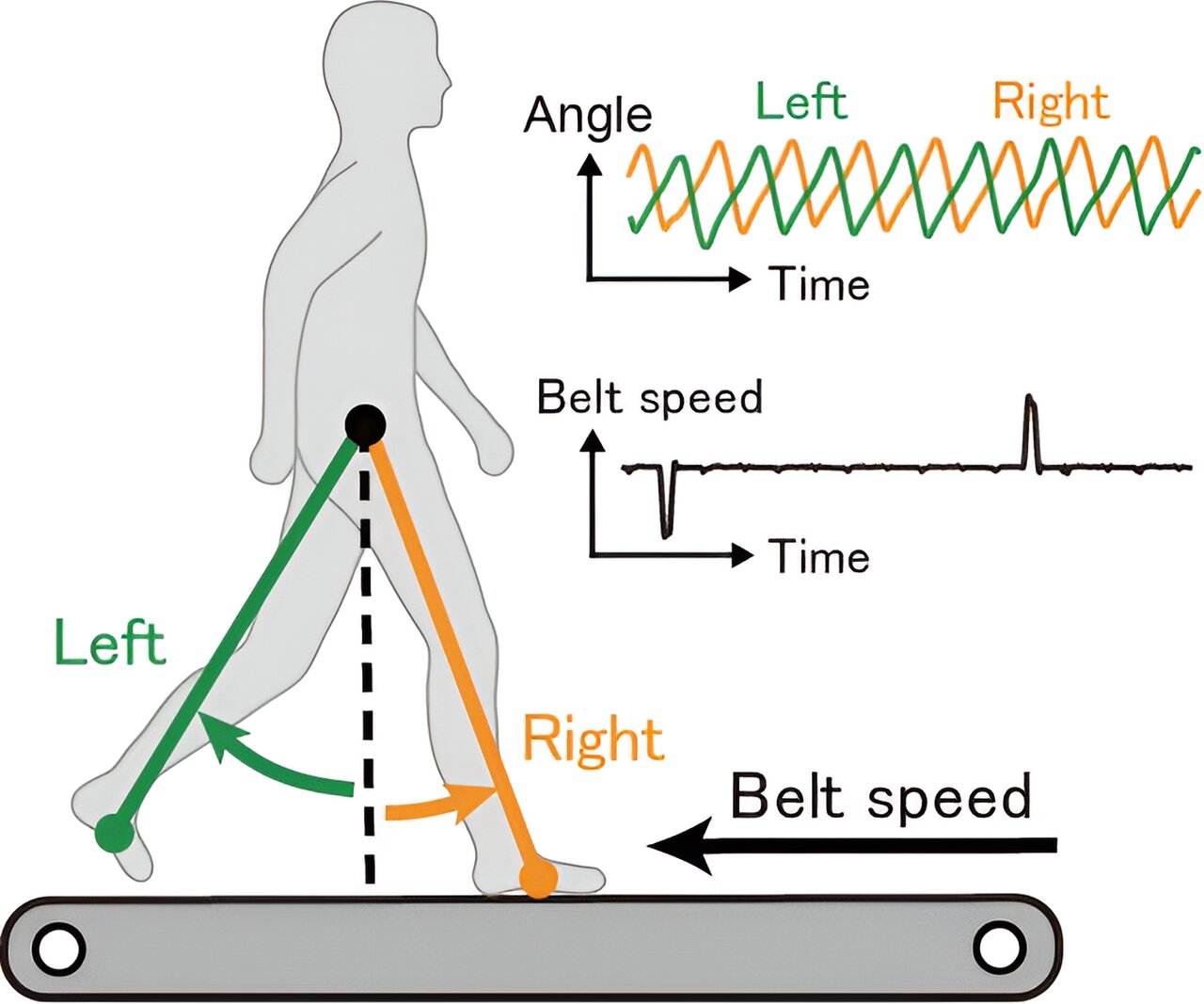
Walking is an activity that is often taken for granted. Most people usually think they can multitask by “walking and chewing gum” simultaneously with hardly any taxation of their mental effort. Indeed, each leg can move rhythmically independently of the other, controlled by its side of the spinal cord.
However, the ability of the human brain to coordinate the gait so that a walker’s legs are half a stride out of phase with each other, called the “antiphase relationship,” is not so trivial when an obstacle or asymmetry occurs, such as a curve in the path. A better understanding of how a normal walking cadence is maintained may lead to enhanced rehabilitation techniques for patients who have experienced brain trauma or other neurological problems.
In a study published in Communications Biology, researchers from Osaka University captured kinematic data from healthy patients walking on a treadmill that was occasionally perturbed by a sudden change in speed. This led to a momentary loss of the antiphase relationship, but it was quickly restored as the subjects reoriented their walking movements. The data from this experiment was analyzed using a mathematical model of two coupled oscillators—similar to two pendulums connected by a spring—along with a Bayesian inference method.
The approach allowed the researchers to calculate the most probable function that represents how the brain applied its control to coordinate the leg motions. To simplify the problem further, phase reduction theory was applied, which assumes that the perturbed system is returning to a regular periodic solution, called the limit cycle.
-

Control model of interlimb coordination using phase oscillators. Credit: 2024, Arai et al., Interlimb coordination is not strictly controlled during walking, Communications Biology
-

Expected and estimated control of interlimb coordination. Credit: 2024, Arai et al., Interlimb coordination is not strictly controlled during walking, Communications Biology
“Using Bayesian inference enabled us to infer the control of leg coordination in a quantitative way,” says lead author of the study, Takahiro Arai.
Surprisingly, the researchers found that the relative phase is not actively controlled by the brain until the deviation from the correct antiphase orientation exceeds a certain threshold. That is, the brain does not actively intervene to coordinate the relative position of the legs until they are out of lockstep by a certain measure. The researchers suggest that not requiring the constant application of control improves both energy efficiency and maneuverability.
“Based on our model, we see that the brain is neither overly controlling, which would limit our ability to negotiate obstacles and also consume a lot of brainpower, nor overly lax, which could lead to falling over when the legs become too uncoordinated,” says senior author Shinya Aoi.
This research may be important to help improve the walking of elderly people, or individuals who have experienced the neurological effects of a stroke or Parkinson’s disease. It may also lead to the development of physical aids that help people walk more naturally.
More information:
Interlimb coordination is not strictly controlled during walking, Communications Biology (2024). DOI: 10.1038/s42003-024-06843-w
Citation:
Study finds brain intervenes in walking only after discoordination exceeds a certain threshold (2024, September 20)
retrieved 21 September 2024
from https://medicalxpress.com/news/2024-09-brain-intervenes-discoordination-exceeds-threshold.html
This document is subject to copyright. Apart from any fair dealing for the purpose of private study or research, no
part may be reproduced without the written permission. The content is provided for information purposes only.


